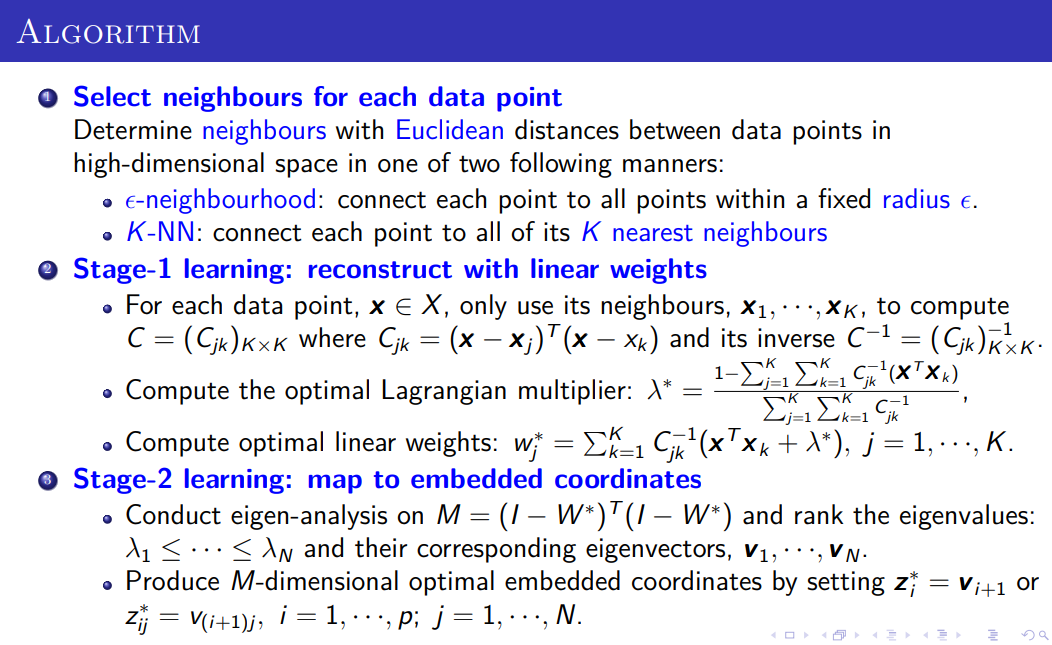Stage 1: learn reconstructing one data point with its neighboring points via linear parametric model. find Neighbors via-
- ϵ-neighborhood : connect each point to all points within a fixed radius ϵ.
- k-nearest neighbors algorithm (k-NN) : connect each point to all of its K nearest neighbours
Stage 2: learn embedding coordinates by reconstructing one data point with its neighboring points linearly in low-dimensional representational space with those parameters learned in Stage 1
K and ϵ become hyperparameters

Limitation
- data points have to be sampled from the manifold uniformly
- Sensitive to noisy sampling and the hyperparameter, K or ϵ
- Unlike Isometric Feature Mapping (ISOMAP), LLE does not make any assumption on manifolds being convex but may not be able to recover complex non-convex manifold. Convex set
- Unlike ISOMAP, no robust way to decide the intrinsic dimension of embedding space - Proportion of Variance does not work
Out of sample extension
does not provide any mapping function: z = f (x) for unseen data.
Link to originaluse the known X data and their embedded coordinates Z as training examples to learn a parametric mapping function e.g. Neural Networks or Support Vector Regressor